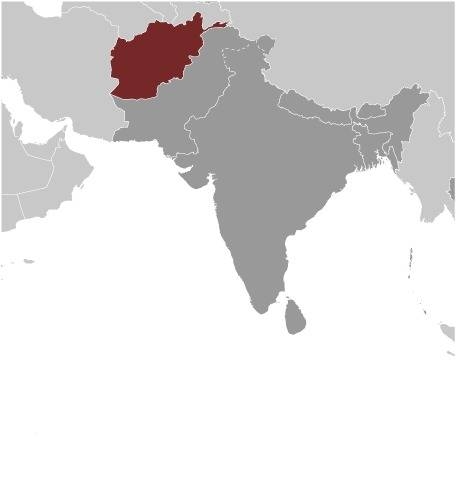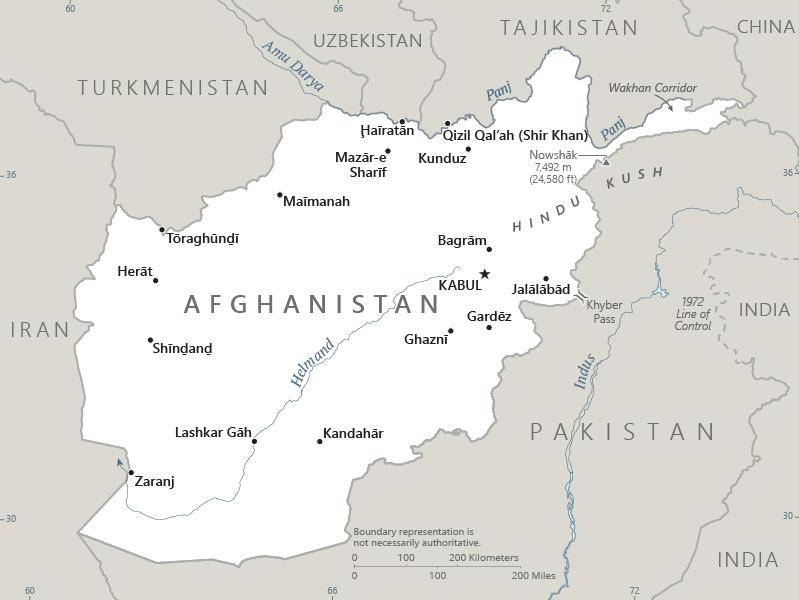Country Summary




Introduction
Background
Afghanistan served as a buffer between the British and Russian Empires until it won independence from British control in 1919. In August 2021, the Islamic fundamentalist Taliban overran the country; the latest group to rule in this war-torn country since 1979.
Geography
Area
total: 652,230 sq km
land: 652,230 sq km
water: 0 sq km
Climate
arid to semiarid; cold winters and hot summers
Natural resources
natural gas, petroleum, coal, copper, chromite, talc, barites, sulfur, lead, zinc, iron ore, salt, precious and semiprecious stones, arable land
People and Society
Population
38,346,720 (2022 est.)
Ethnic groups
Current, reliable statistical data on ethnicity in Afghanistan are not available; Afghanistan's 2004 Constitution cited Pashtun, Tajik, Hazara, Uzbek, Turkman, Baluch, Pachaie, Nuristani, Aymaq, Arab, Qirghiz, Qizilbash, Gujur, and Brahwui ethnicities; Afghanistan has dozens of other small ethnic groups
Languages
Afghan Persian or Dari (official, lingua franca) 77%, Pashto (official) 48%, Uzbeki 11%, English 6%, Turkmani 3%, Urdu 3%, Pachaie 1%, Nuristani 1%, Arabic 1%, Balochi 1%, other <1% (2020 est.)
Religions
Muslim 99.7% (Sunni 84.7 - 89.7%, Shia 10 - 15%), other <0.3% (2009 est.)
Population growth rate
2.3% (2022 est.)
Government
Government type
the United States does not recognize the Taliban government
Capital
name: Kabul
Executive branch
chief of state:
president (vacant); note – before 15 August, 2021, the president was both chief of state and head of government; President Ashraf GHANI departed the country on 15 August 2021; on 7 September 2021, the Taliban announced Mullah Mohammad HASSAN Akhund as the so-called “acting Prime Minister” of a so-called “interim government”; as of November 2021, the group had announced three acting so-called “Deputy Prime Ministers”: Mullah Abdul Ghani BERADER, Mullah Abdul Salam HANAFI, and Maulawi Abdul KABIR
head of government: president (vacant); note - President Ashraf GHANI departed the country on 15 August 2021; on 7 September 2021, the Taliban announced Mullah Mohammad HASSAN Akhund as the acting Prime Minister of an interim Taliban government; the US does not recognize the Taliban government; as of November 2021, the group had announced three acting Deputy Prime Ministers: Mullah Abdul Ghani BERADER, Mullah Abdul Salam HANAFI, and Maulawi Abdul KABIR
Legislative branch
description: before 15 August, 2021, Afghanistan had a bicameral National Assembly that consisted of a House of Elders and a House of People; since August 15, the Taliban’s so-called “interim government” has not purported to announce the formation of a legislative branch
Economy
Economic overview
extremely low-income South Asian economy; import drops, currency depreciation, disappearing central bank reserves, and increasing inflation after Taliban takeover; increasing Chinese trade; hit hard by COVID; ongoing sanctions
Real GDP (purchasing power parity)
$77.04 billion (2020 est.)
Real GDP per capita
$2,000 (2020 est.)
Agricultural products
wheat, milk, grapes, vegetables, potatoes, watermelons, melons, rice, onions, apples
Industries
small-scale production of bricks, textiles, soap, furniture, shoes, fertilizer, apparel, food products, non-alcoholic beverages, mineral water, cement; handwoven carpets; natural gas, coal, copper
Exports
$1.48 billion (2020 est.)
Exports - partners
United Arab Emirates 45%, Pakistan 24%, India 22%, China 1% (2019)
Exports - commodities
gold, grapes, opium, fruits and nuts, insect resins, cotton, handwoven carpets, soapstone, scrap metal (2019)
Imports
$6.98 billion (2020 est.)
Imports - partners
United Arab Emirates 23%, Pakistan 17%, India 13%, China 9%, United States 9%, Uzbekistan 7%, Kazakhstan 6% (2019)
Imports - commodities
wheat flours, broadcasting equipment, refined petroleum, rolled tobacco, aircraft parts, synthetic fabrics (2019)
Exchange rates
afghanis (AFA) per US dollar -
Page last updated: Thursday, December 15, 2022
